Pilot sites
Goals
The comprehensive data sets concerning GAIN pilot sites will support the modelling activities aimed at implementing the emerging framework of Precision Fish/Shellfish Farming. Data sets will be used to produce predictive models and, ultimately, software that is able to convert raw data into formats that are readily interpretable and meet stakeholder requirements, thus supporting decision-making on fish/shellfish farms.
Furthermore, the results will be used for developing "best practice guidelines” for data collection, quality assessment and management across the range of aquaculture typologies and species investigated in the ten pilot cases.
GAIN ambition is to contribute to the implementation of Precision Fish Farming (PFF), which in GAIN will be extended to Precision Shellfish Farming (PSF), across the systems mentioned above, collecting data from ten pilot sites and processing them using state-of-the-art mechanistic models, including data assimilation algorithms, and data driven models.
10 GAIN pilot sites
This section is devoted to the 10 GAIN pilot sites where the two components (feeds and precision-aquaculture) are tested, covering a wide range of aquaculture typologies.
GAIN focuses on both freshwater and coastal/marine environments, and includes species that are relevant both in volume and niche markets. A variety of state-of-the art sensors were deployed on ten sites, in order to detect both environmental and animal variables, whenever possible in real time.
GAIN pilot sites cover the main aquaculture typologies, i.e. shellfish culture (oysters and mussels), marine finfish cages (Atlantic salmon, seabass), land based raceway (rainbow trout), RAS (common carp) and pond systems (common carp and shrimp).
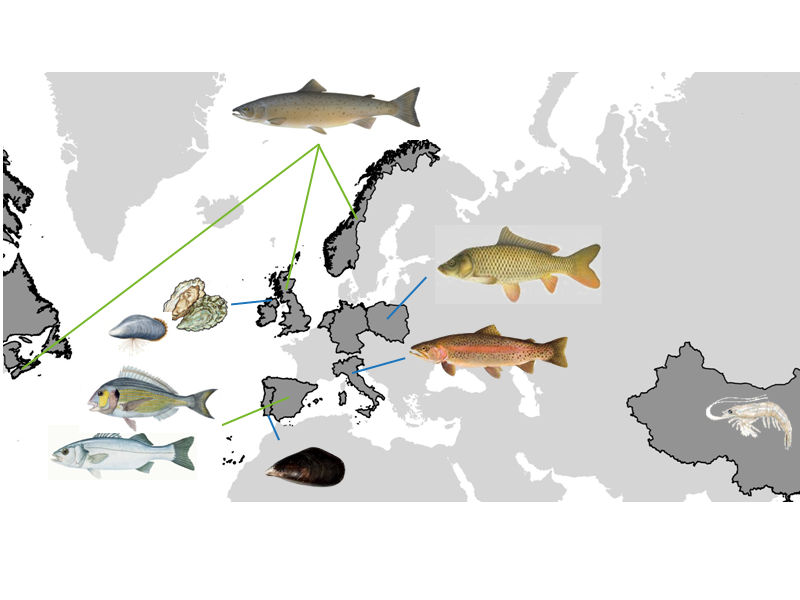
Shellfish
Finfish
Shellfish
Dundrum bay – Northern Ireland (GBR)
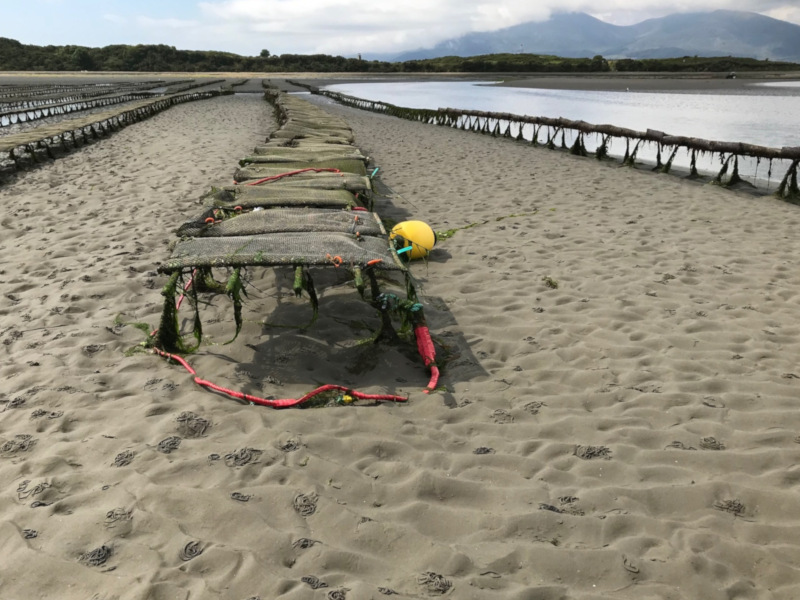
| Location | 54.3 N 5.84 W |
| Species | Magallana gigas (Blue mussels) |
| Culture system | Intertidal trestles |
| Size and layout | 16 hectares, depth intertidal +/- 5m |
This first pilot aquaculture site, instrumented by AFBI, is situated in Inner Dundrum Bay, a small, largely intertidal inlet on the east coast of Northern Ireland connected to the Irish Sea by a narrow channel. The main focus of aquaculture production at this site is for Pacific oysters (Magallana gigas) grown on intertidal trestles.
The Inner Dundrum Bay catchment is the subject of a long term monitoring campaign measuring both environmental and animal variables sample "in situ". Thanks to GAIN, oyster growth and quality are monitored bimonthly, with the intention to transfer skills to the producer.
Belfast Lough – Northern Ireland (GBR)
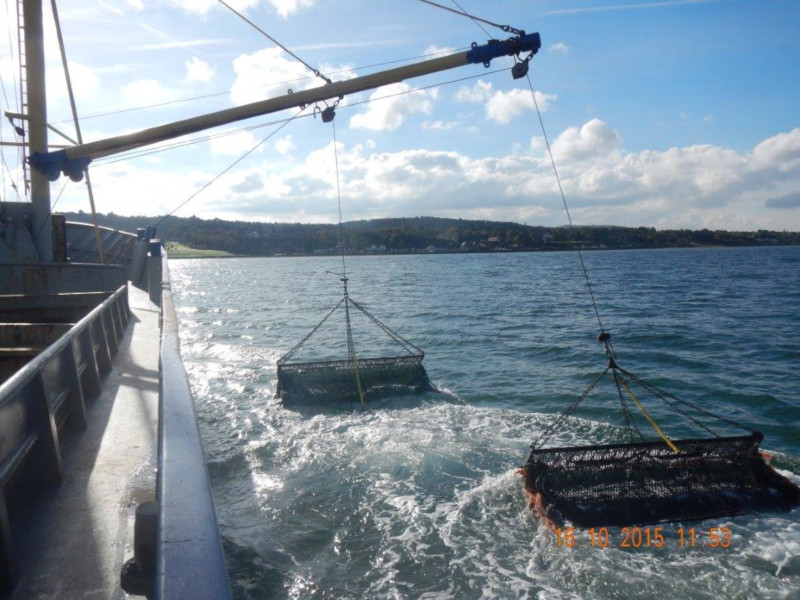
| Location | 54°41'27.2"N 5°47'07.1"W |
| Species | Magallana edulis (Blue mussels) |
| Culture system | Bottom culture |
| Size and layout | 952 hectares, depth 5m |
This second pilot aquaculture site, instrumented by AFBI, is Belfast Lough; the majority of bottom cultivation for mussels in Northern Ireland occurs on licensed sites in this lough. Seed mussels are dredged from offshore seed mussel beds and relayed on the licensed aquaculture sites in Belfast Lough (Figure 4, Table 3.4) for on-growing to harvestable size. Producers in Belfast Lough have been approached to participate in this project.
Technologies to be investigated will include: remote sensing, trawl safe moorings and short term moorings.
Focus here will be on turbidity, dissolved oxygen and particulate organic matter, key determinants impacting mussel growth and quality.
Sagres – SW of Portugal (PRT)
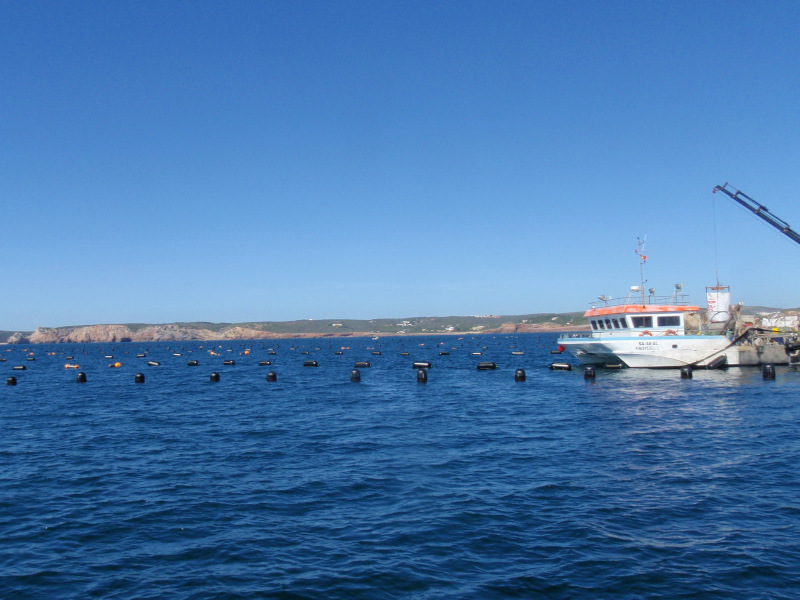
| Location | 37° 1' N, 8° 53' W |
| Species | Mytilus galloprovincialis (Meditarranean mussel) |
| Culture system | Longline culture |
| Size and layout | 3 current concessions (420m x 420m) with a further concession of 420 x 420m planned for the future, depth 17-36m |
The Sagres pilot site is located in the Finisterra Lda offshore concessions on the Algarve coast, SW Portugal. These concessions are located east from the Sagres harbour and have been issued only for bivalve aquaculture. The production is using longline cultivation of Mytilus galloprovincialis (Meditarranean mussel).
Instrumentation of the Finisterra site is a two phase process starting with HOBO loggers for sea surface temperature (SST), salinity and oxygen. Data is recorded every 30 min and is normally downloaded on a monthly basis and uploaded to the IBM platform. SGM is responsible for ensuring that all the instruments are calibrated and are working correctly.
Finfish
Rossøya Nord– Norway (NOR)
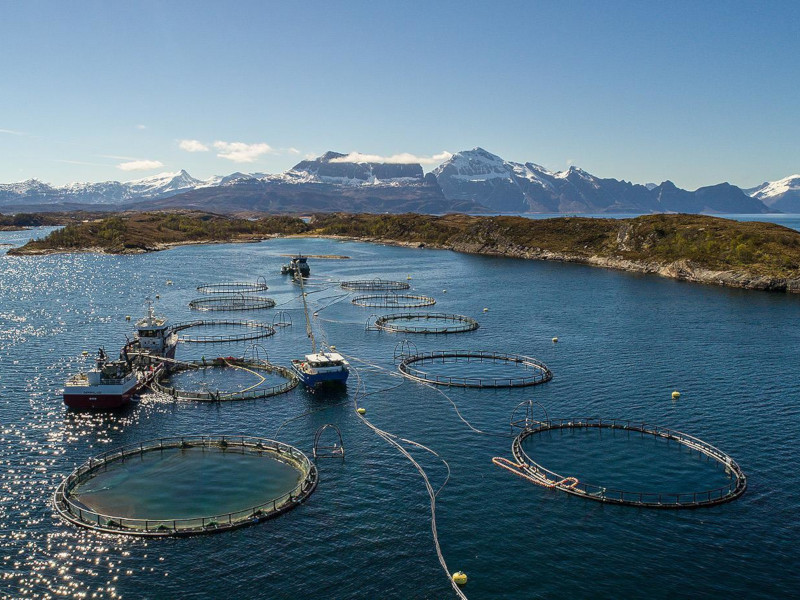
| Location | 67 4.380, 13 56.855 |
| Species | Salmo salar - Atlantic salmon |
| Culture system | Fish cages |
| Cage size | circumference 90 m, depth 27 m |
Rossøya Nord farming site is one of the five commercial farming sites owned by GIFAS in Gildeskål municipality. The site has a mooring system with placements for 16 cages, The site is semi-exposed, with the southern cages partially sheltered by the island of Rossøya, while the northern cages are comparatively more exposed to wind and waves. All cages at Rossøya are equipped with a CFC (closed fish cage) system. CFC is a semi-closed cage system developed in-house at GIFAS to prevent sea lice infections in commercial cages.
One cage has been instrumented to observe environmental and animal variables, i.e. variables concerning fish behaviour, growth and welfare. GIFAS is responsible to ensure that all the instruments are in the right working condition and that the data is transferred to the GAIN hub and ready to be processed. The sonar system, and logger for the environmental sensors will all be connected to the Internet via a 4G modem and will regularly transmit data to a storage Cloud.
Carness Bay Orkney- Scotland (GBR)
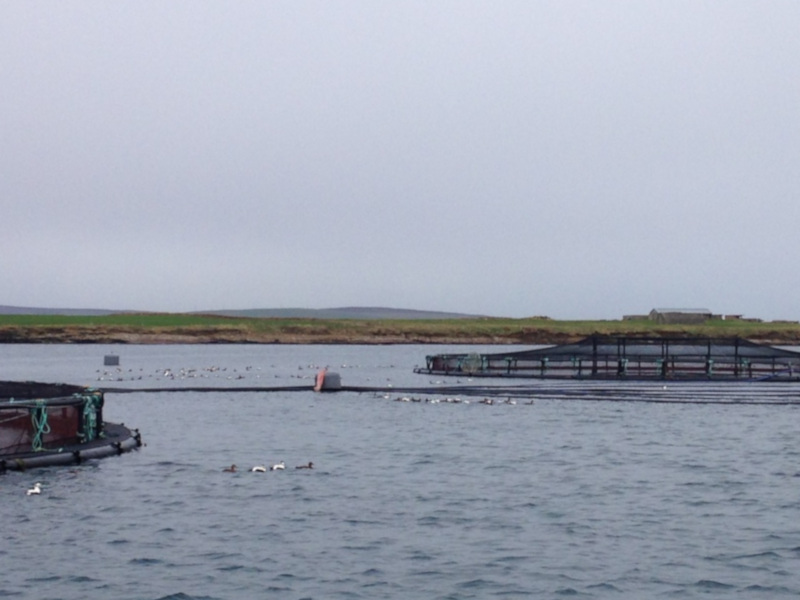
| Location | 59.009166, 2.924167 |
| Species | Salmo salar - Atlantic salmon |
| Culture system | Fish cages |
| Cage | circumference 100 m, depth 6 m |
The Salmon sea farm is Carness Bay and it is located in Orkney (Scotland, UK) and owned by Cooke aquaculture, a committed end-user of GAIN. This barge feed site includes a total of 12x100m circumference cages.
Each cage will have around 20.000 salmon. All cages are equipped with underwater cameras and fish is constantly visually monitored for feeding behaviour.
One cage is instrumented to collect both environmental and animal variables i.e. variables concerning fish behavior, growth and welfare data.
UoS team is responsible to ensure that all the instruments are in the right working condition and that the data are made available to the GAIN Consortium.
McNutt’s Island Shelburne - Nova Scotia, Canada (CAN)
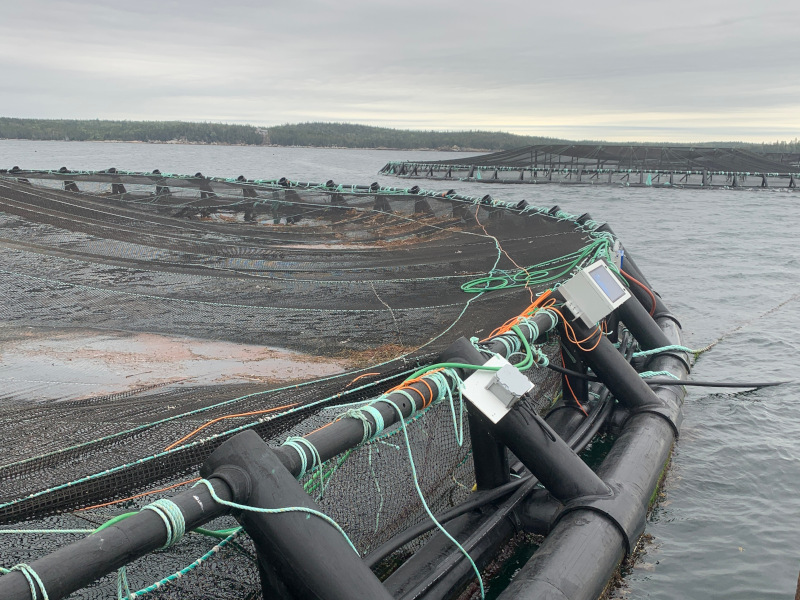
| Location | 43.71889N, 65.2834W |
| Species | Salmo salar - Atlantic salmon |
| Culture system | Fish cages |
| Cage | circumference 100 m, depth 12 m |
This pilot site is located off McNutt’s Island, near Shelburne in Southern Nova Scotia, Canada. This Atlantic salmon farm is part of the Cooke Aquaculture Group, a committed end-user of the GAIN project.
McNutts has 19 sea cages stocked with Salmo salar (about 25.000 salmons). All cages are feed using an automated feeding system operated from on-land location with 2-3 cages being feed at once, and all cages feed twice daily..
All sea cages will be equipped instrumented, in order to collect data concerning both environmental (water temperature and dissolved oxygen) and animal variables (biomass, mortality, average weight, lice count, and feed amount).
Dalhousie provides information on the use of technology in commercial farms and the data to be expected.
El Gorguel, Cartagena – Spain (ESP)
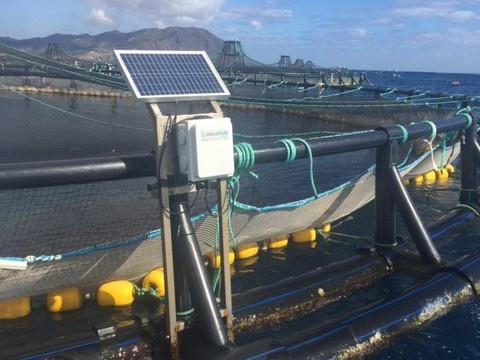
| Location | 43.71889N, 65.2834W |
| Species | Salmo salar - Atlantic salmon |
| Culture system | Fish cages |
| Cage | circumference 100 m, depth 12 m |
The pilot site is situated in Gorguel (Cartagena), in the South coast of Spain in Mediterranean Sea. In this off-shore site, Lebeche, part of the Culmarex grop, farms seabass in cages. The fish in this trial were delivered to El Gorguel as juveniles (15-20 grams).
All cages are equipped with nets, covered with protection nets to avoid bird predation and equipped with feed spreaders. Feeding is controlled by a software that provides as output the feeding speed, using as input water temperature, biomass per cage, fish average weight and behavior. Six out of thirty-two cages were instrumented to collect both environmental and animal variables, i.e. variables concerning fish behaviour, growth and welfare data.
In GAIN, the goal is to use them for improving the feeding strategy and prevent some health problems.
Preore– Italy (iTA)
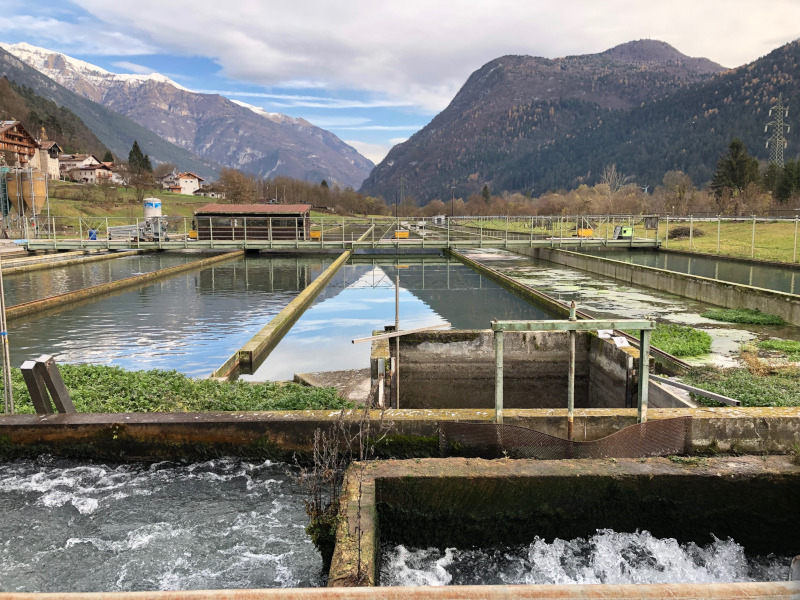
| Location | 46° 02’ 41.04’’ N, 10° 45’ 31.19’’E |
| Species | Oncorhynchus mykiss – Rainbow trout |
| Culture system | Raceways |
| Raceways | length 100 m, width 7 m |
This pilot site is located in the municipality of Preore, in Northern Italy, near the city of Trento. In this area, the farming of rainbow trout (Oncorhynchus mykiss) is a well-established, traditional activity. The site is owned by "Troticultura Fratelli Leonardi" a GAIN committed end user. The company produces its own fingerlings, which are subsequently transferred to 6 100 m long and 7 m wide raceway basins.
The farm is equipped with sensors for real time monitoring of water temperature and dissolved oxygen. A set of chemical parameters which could be potentially affected by fish metabolism were monitored by FEM.
As regard fish biomass, it will be determined on the basis of: a. the number of stocked individuals, b. mortality and c. fish size distribution. This one will be sampled in real time by means of a Biomass Daily System, installed by UNIVE.
The comprehensive data set will be complemented with a set of data concerning feed composition and feeding time provided by the company. UNIVE is responsible for making the data collected available to the Consortium. Environmental and biomass data will be processed by a dynamic mechanistic model, including data assimilation algorithms, developed by UNIVE, which will be used for supporting target operators.
Nowe Czarnowo – Poland (POL)
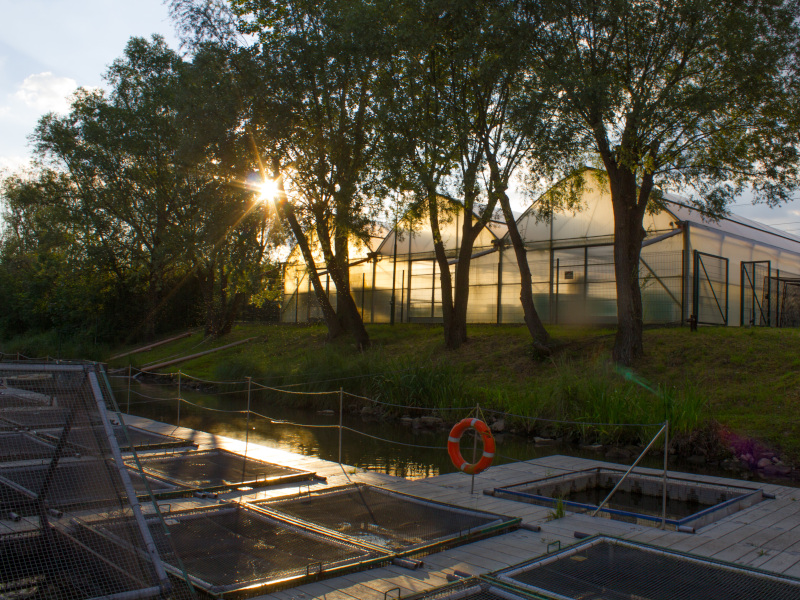
| Location | 53 12 35.5 N / 14 27 50.2 E |
| Species | Cyprinus carpio, common carp |
| Culture system | RAS coupled with hydroponic units |
| Tank volume | 2.7 m3 |
The pilot site is located in North Western Poland in the West Pomerania Province, approximately 35 km from Szczecin. The Fisheries Experimental Station (FES) in Nowe Czarnowo breeds and produces carp and other freshwater fish species. The main part of the facility consists of a triple tent with fully adjustable independent recirculating aquaculture systems (RAS), coupled with hydroponics units. Adjacent to the tent, 120 floating cages are submerged in the outlet channel of a power plant. The FES in Nowe Czarnowo also has a hatchery on site and a RAS for rearing fry, supplied by well water. Fish trials within GAIN will be performed in a RAS located in tents.
The aquaponic system will been instrumented to observe environmental animal variables i.e. variables concerning fish behaviour, growth and welfare.
ZUT will ensure that all the instruments are maintained in working condition and that the data is easily available to the Consortium.
Fenzhou Village – China (CHN)
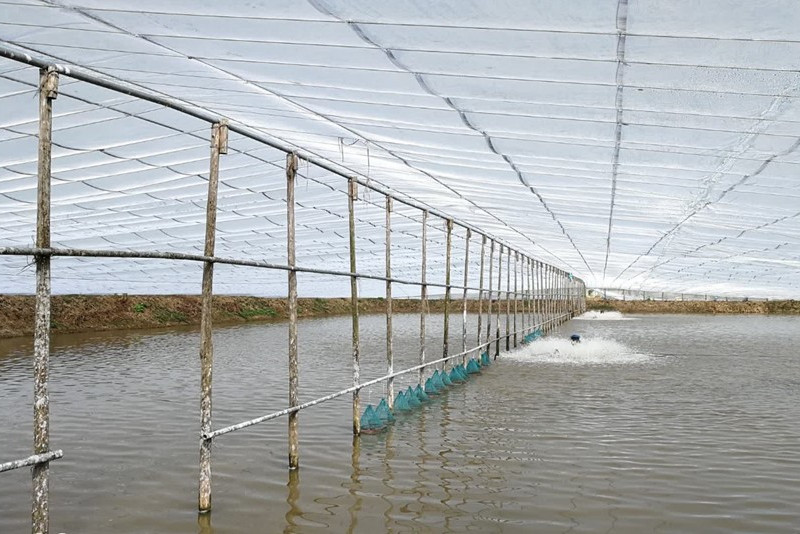
| Location | 113˚14’16’’E, 22˚19’9’’N |
| Species | White Shrimp / Tiger Shrimp in Spring and Summer; Giant Freshwater Prawn in Autumn and Winter |
| Culture system | Intensive shrimp monoculture / Shrimp-rice co-culture in enclosed earthen ponds with aerators (and vinyl cover in winter) |
| Pond Size | 0.3 to 0.6 Ha |
Fenzhou is a typical village located on the south-western plain of the Pearl River estuary, China, with more than 70% of the total village land area (530 Ha) covered by brackish water (salinity range: 1 - 5) ponds. Enclosed pond culture is the major shrimp farming method at present in China: this is the main economic activity in Fenzhou. Farmers pour fresh source water into the ponds at the beginning of the culture season, add a little water in the middle in case of evaporation and drain the ponds after shrimp harvest. Therefore, there is no water exchange between ponds and the environment during the whole cultivation period (3 to 6 months), which minimizes the risk of pathogen introduction from outside.
In Fenzhou shrimp farm, some stations are shrimp-rice co-culture ponds; this is a new trial farming style developed by SCSFRI, which takes the advantage of nutrient removal ability of rice and the economic benefit.The Fenzhou Village site was instrumented to observe environmental and animal variables, i.e. variables concerning shrimp behavior, growth and welfare, in order to set up protocols and guidelines for optimizing this eco-friendly farming styles, in relation to the environmental carrying capacity.
